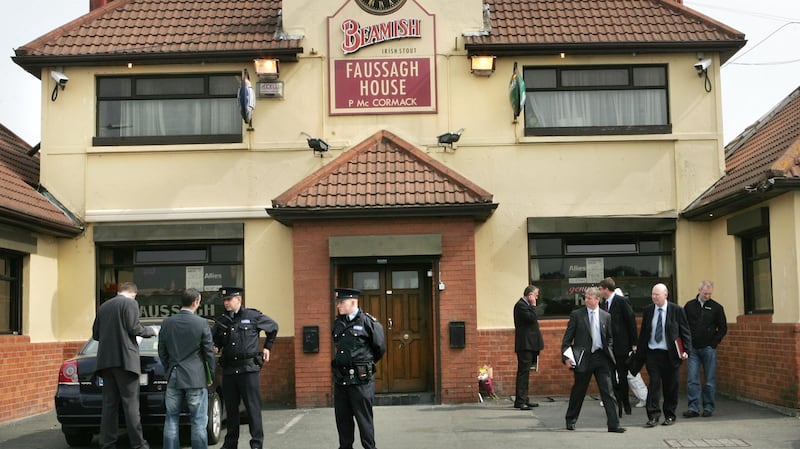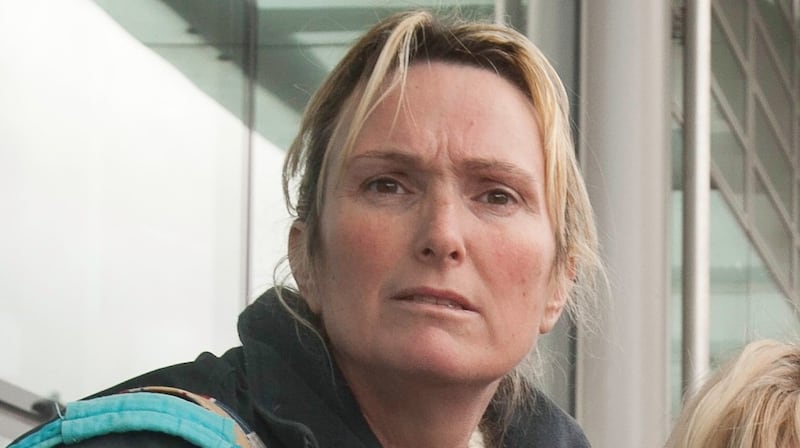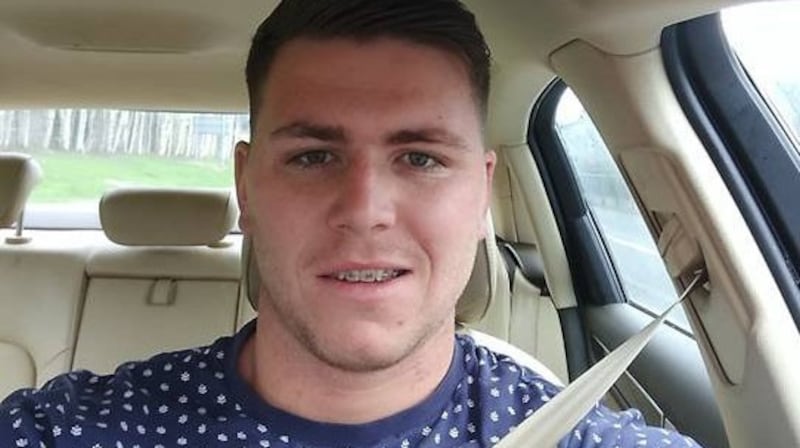Eamon Dunne saw his killer coming for him.
But it was too late.
“I saw Eamon’s head splatter on the back top right of his head; I knew he was bollixed,” one of the men with him on the night of his gun murder would later tell Dunne’s inquest.
Gang leader Dunne was in the Fassaugh House pub in Cabra, north Dublin, in April 2010, when three armed and masked men entered.
One of them walked right up to Dunne, pumping six shots into his head and body during what was a Friday night gathering for a 40th birthday party.
In a last-second effort to save himself, the feared gang leader grabbed a Chinese lounge boy and tried to use him as a human shield.
But Dunne was riddled with bullets and died on the spot.
The armed men knew exactly what alcove was Dunne was in, and simply walked in and shot him. One of them did the shooting while the other two stood watch over the patrons, ready to gun down any would-be ‘have-a-go heroes’.
Dunne, a 34-year-old from Finglas, had gone on a murderous spree after assuming control of a major drug gang in the north Dublin suburb when its then leader, Martin "Marlo" Hyland, was shot dead in December 2006.
Hyland was killed by his own gang, with Dunne part of the conspiracy, because of the Garda and media attention he was drawing onto them.
Under Dunne’s leadership, the gang would murder 11 people.
Its violence created so many divisions in the underworld that the Kinahan gang murdered Dunne to calm Dublin gangland – its main customers for its drugs.

With Dunne murdered, Finglas went quiet. It and Limerick had been gangland battle zones for a decade. The body counts stretched into double figures in both places as gangs who got rich off the Celtic Tiger drug binge fought to the death to protect their patch. But when Dunne was murdered the relentless killings stopped in Finglas.
Spending on drugs
Eight years on, it's ready to blow up again – as are Ballymun and Clondalkin. All the while the Kinahan-Hutch feud soaks up Garda resources.
The economy is recovering, and with it disposable incomes for spending on so-called recreational drugs. Garda sources say as the nation’s spend on drugs appears to be increasing once more it is no surprise tensions between rival drug gangs are rising after the quieter years of the recession.
This week, Assistant Commissioner Pat Leahy, who is in charge of policing in the Dublin region, confirmed these as the worrying gangland disputes for the Garda in the city.
He outlined how 522 people in Dublin had been told by the Garda that their lives were in danger; though not all as part of these feuds and not all because of gangland crime.
But most of those at the most critical and immediate risk of attack face feud-related threats.
Of the 11 people regarded at "critical risk"; the Irish Times understands as many as 10 death threats are related to the Kinahan-Hutch feud.
It is a dispute now almost three years old and which has claimed 14 lives to date. Gardaí are battling well to keep a lid on the violence but no resolution or end is in sight.
If the feuds Leahy has warned of continue to escalate, the 11-strong critical list will go only one way.
One worrying feature of the other feuds now concerning Dublin gardaí is that the factions involved in them are aligned to either the Kinahan or Hutch sides in a complex web of underworld relationships.
The Ballymun feud has already reared its head. Mother of six Antoinette Corbally (48) and Clinton Shannon (30) were shot dead last August in Ballymun.
Ms Corbally's brother Derek Devoy (38), a Kinahan associate, was the intended target. When Jason Molyneux (27) was gunned down in the north inner city in January, that was also linked to the Ballymun feud.

The feud has its origins in a shooting outside a pub in north Dublin five years ago during which one Dublin gangland criminal was seriously injured.
Michael Devoy (41) – a brother of Antoinette Corbally and Derek Devoy – was blamed by criminal elements for the shooting. When released from a short prison sentence in January 2014 he was shot dead within 24 hours.
Men close to Michael Devoy believed Molyneux and others linked to the Hutch faction were involved in his murder.
Last August, the men from the Hutch faction decided they would kill Derek Devoy because they felt he was a threat to their safety.
But the shooting went wrong and instead Antoinette Corbally and Clinton Shannon were shot dead.
However, gardaí believe the criminals aligned to the Hutch faction still want Derek Devoy dead. And they also believe Jason Molyneux’s associates want to avenge his murder.
It means the Ballymun feud, in which people from the inner city are also involved, will likely result in further bloodshed.
Clondalkin feud
A separate feud in Clondalkin has already seen four men shot dead. And one of the sides is aligned with the Kinahan gang.
The dominant player in that drug turf war feud is a man in his 30s currently in prison.
While concerns are now growing over the Clondalkin feud, its origins stretch back five years.
In August 2013, Dean Johnson (21), Greenfort Lawns, Clondalkin, was shot dead on Harelawn Green. Five days later Jason Carroll (39) was shot as he tried to run to the safety of his nearby home on Cherrywood Drive.
Johnson was killed in a case of mistaken identity by a gunman who intended to shoot dead the man now in his early 30s and currently serving a prison sentence.
As a result of the botched effort on his life, that jailed drug dealer is suspected of killing Carroll, who was a member of a rival faction, five days later.
And now that the gang leader in his early 30s is in prison, gardaí believe his rivals have been targeting those close to him.

Last September, Darragh Nugent (36) was shot dead outside his home on Wheatfield Avenue in Clondalkin.
A week later his close associate John Gibson, a father of two from Lucan, Co Dublin, was shot dead on Fortunestown Lane in Tallaght.
Both Gibson and Nugent were associates of the jailed drug dealer in his early 30s. And gardaí believe they were killed by the drug dealer’s rivals, who are backed by the Kinahan gang.
Separately, in Finglas, a young drug dealer in his mid-20s who is closely aligned to the Kinahan gang has clashed with a number of older criminals as he has sought to establish himself.
And he and the gang he leads are now feuding with a rival gang from Finglas who are mostly in their 30s.
Last Sunday, 35-year-old Finglas man Shane Fowler died when the motorbike he was riding hit a lamppost.
He was a member of the Finglas-based faction feuding with the gang led by the young criminal.
When he crashed on Sunday, a gun he was carrying fell on to the road. While paramedics who arrived on the scene saw the gun, by the time gardaí got there a member of the public had grabbed it and run off.
Gardaí believe the gun was about to be used in a feud-related shooting, possibly a murder attempt on the man in his mid-20s aligned to the Kinahans.
Gardaí are now extremely concerned last Sunday’s motorbike fatality was effectively a false start to what will prove a bloody feud in Finglas, especially because one side is heavily backed by the Kinahans.
Officers believe the potential for extreme violence has been quelled of late because a number of men involved in the feud have been jailed for their role in a gang brawl. But on their release tensions will increase again, gardaí fear.
While the Kinahan-Hutch feud remains the main concern from the Garda, senior officers believe the other three disputes could erupt at any moment.
And they say policing resources in the city will be stretched beyond capacity when that happens.











